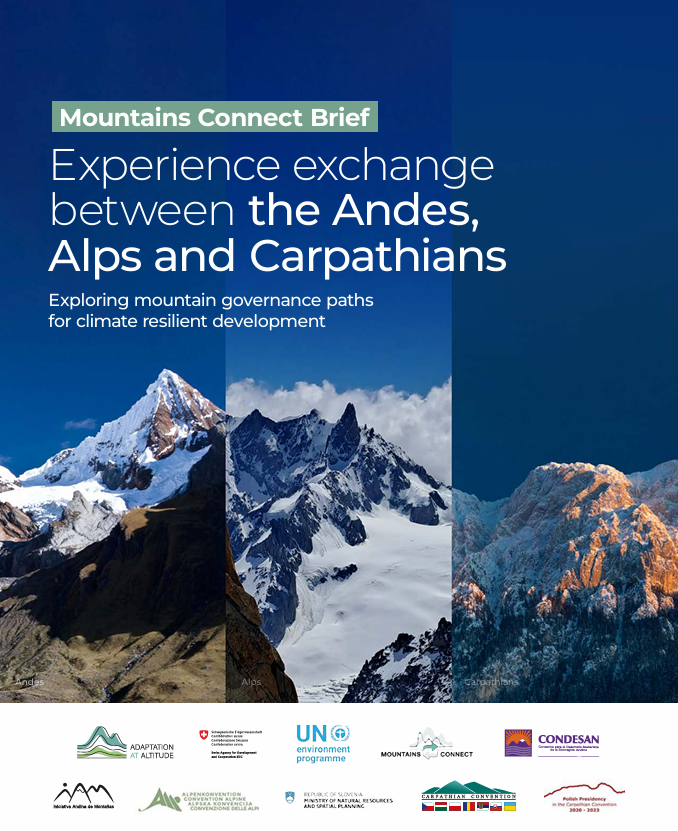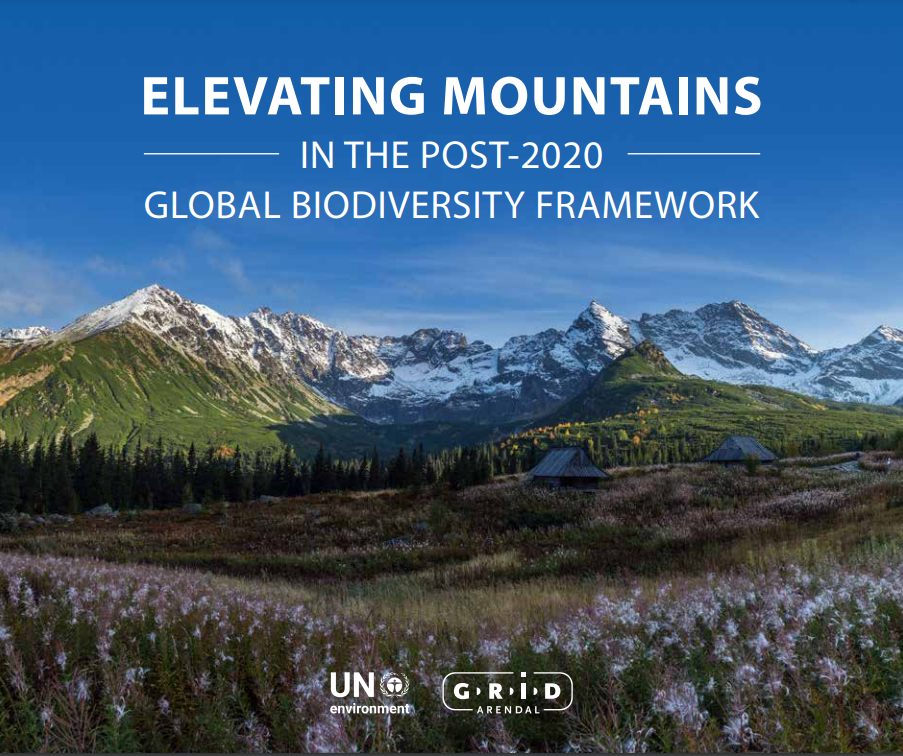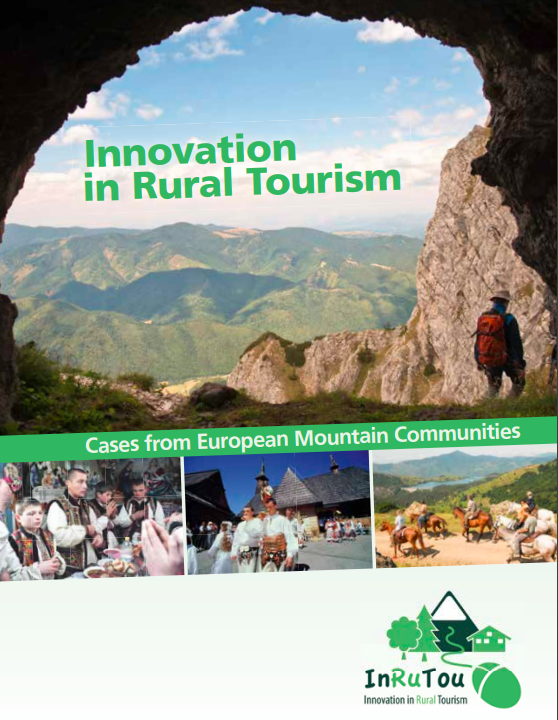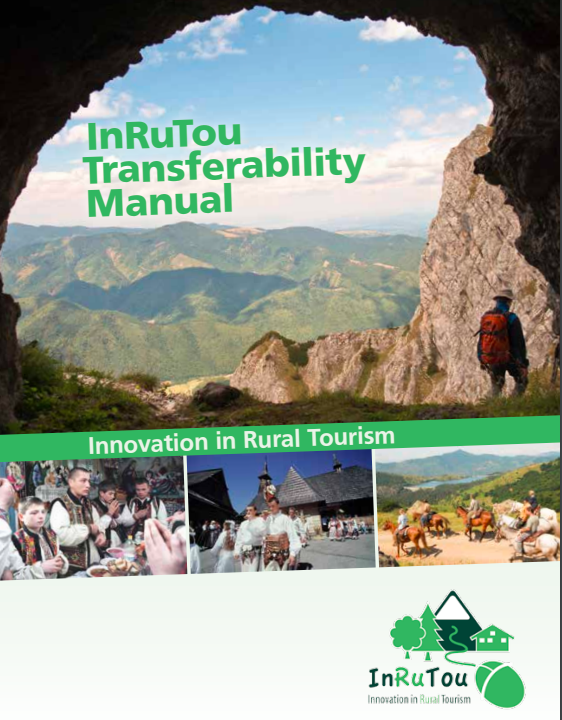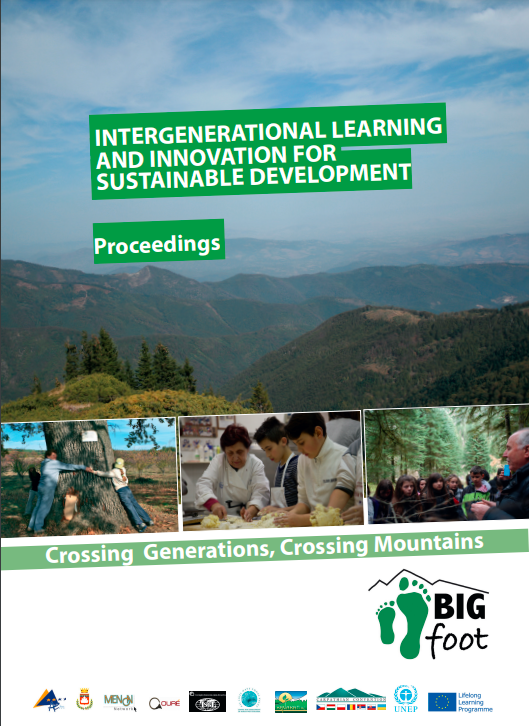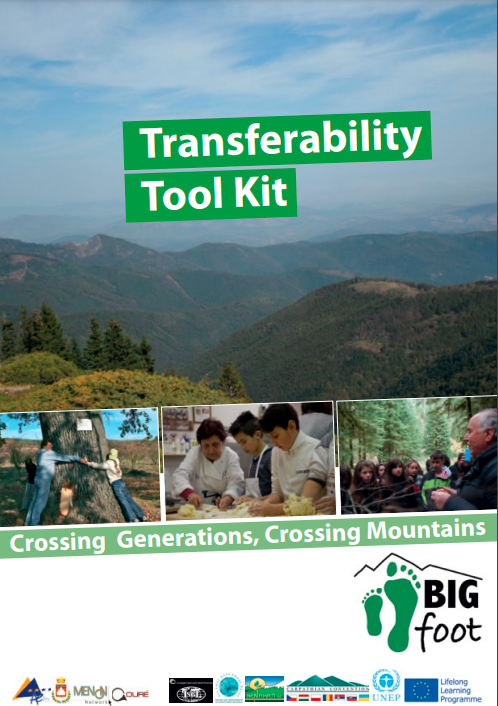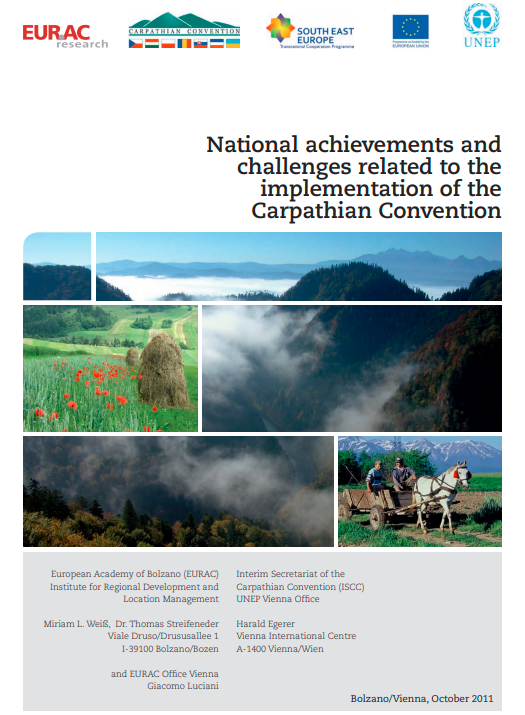Publications
The Study Trip of Andean Mountain Initiative (AMI) delegates to Europe, was developed with the idea to promote exchange with their counterparts in the Alpine Convention and the Carpathian Convention, with the fundamental objective of strengthening cooperation between the world’s regional mountain platforms. The trip took place during the first half of June 2023, covered visits to three countries (Austria, Poland, Slovenia), and was centered on sharing approaches and mechanisms for regional governance in mountain ranges for the benefit of people and ecosystems. This Mountain Governance Brief aims to summarize the trip, lessons learned, and recommendations for action for policy representatives involved in mountain range governance.
The brief was produced by the Adaptation at Altitude Programme, funded by the Swiss Agency for Development and Cooperation, CONDESAN (Lima/ Quito), United Nations Environment Programme (Nairobi), Permanent Secretariat of the Alpine Convention (Innsbruck), and Secretariat of the Carpathian Convention (Vienna).
Published in 2024
Mountains, their biodiversity, and the vital ecosystem services they provide, are essential for the well-being of people worldwide. However, mountains are exposed to multiple stressors and processes of global change that can threaten and damage their ecosystems. Therefore, concerted efforts are needed to emphasize the key relevance of mountains and the need for their conservation in global agendas that are currently under negotiation, specifying explicit ambitions for mountains in the environmental and policy discourse.
With this brief, we offer relevant facts and recommendations to support a dialogue and negotiations on priorities, goals and targets for mountains in 2030 and beyond. Member states are encouraged to support this shared vision for a sustainable future for mountains and for humanity worldwide and to fulfil the post-2020 agenda. The policy recommendations in this brief address the CBD post-2020 global biodiversity framework (hereafter “post-2020 framework”).
Published in 2020
This briefing note provides background information to support the upcoming negotiations with the goal to foster a high acknowledgement of mountain biodiversity and related indicators in the Monitoring Framework of the Post-2020 Global Biodiversity Framework. It highlights indicators (with a focus on headline indicators) that are considered key for monitoring and safeguarding mountain biodiversity. The note is based on a previously compiled “set of indicators considered important to safeguard mountain biodiversity,” which was produced to inform the virtual SBSTTA-24 meeting in May/June 2021.
Furthermore, it emphasizes the importance of cooperation among all relevant conventions, organizations and initiatives to achieve the objectives of the Post-2020 Global Biodiversity Framework, by showcasing the example of the trilateral Memorandum of Cooperation between the Convention on Biological Diversity, the Alpine Convention and the Carpathian Convention, which is currently being updated in the light of Post-2020 Global Biodiversity Framework implementation.
The briefing note was produced by the United Nations Environment Programme in close collaboration with the Secretariat of the Carpathian Convention, the Permanent Secretariat of the Alpine Convention, the Mountain Partnership Secretariat, the Mountain Research Initiative, the Global Mountain Biodiversity Assessment and GRID-Arendal.
Published in 2019
Mountain regions occupy about one-quarter of the Earth’s land surface, and are home to 15% of the world’s population. The influence of mountains extends far beyond their ranges: they provide goods and services, most notably water, to millions of people downstream.
Mountains are also on the frontline of climate change. Just like the poles, high-altitude areas are warming faster than the global average, and almost all glaciers across mountain regions are retreating. The topography of mountains means they are often steep, with human populations earning a living on precarious land which is prone to flooding, landslides and a host of other climatic and non-climatic hazards.
Published in 2018
The Carpathians is one of the largest mountain areas of Europe and hosts exceptional biodiversity, including a large population of carnivores. Rising temperatures and changing precipitation are already causing challenges for Carpathian communities. Important industries in the region, such agriculture, tourism and forestry are particularly vulnerable to climate change. Furthermore, the changes also threatens valuable ecosystems and their continued provision of essential services, such as fresh water, biodiversity and carbon sequestration. Extreme weather events, such as floods and droughts are also projected to become even more problematic in the future. Increased regional cooperation in the region will strengthen adaptation efforts to meet shared challenges, in particular through the Carpathian Convention.
The Outlook is intended for a broad audience of experts and specialists, civil society representatives and donor organisations as well as decision makers from various sectors. It includes concrete recommendations for sectorial authorities, national governments and for regional cooperation.
Published in 2018
Climate change threatens access to water and farming in Central Asia – but solutions are at hand
Due to their mountainous topography and arid climate, the Central Asian countries Kazakhstan, Kyrgyzstan, Tajikistan, Turkmenistan and Uzbekistan are among those most vulnerable to climate change. The five states are experiencing detrimental changes in water distribution, extreme weather, natural hazards, and unique mountain biodiversity. This report highlights the risks to the region’s security and economy and recommends practical ways to increase resilience using Ecosystem-based Adaptation measures.
The new report is part of the Mountain Adaptation Outlook series for Central Asia, Eastern Africa, Southern Caucasus, (tropical) Andes and Western Balkans. The collection provides a unique and practical companion for local, regional and national policy makers seeking to protect fragile mountain ecosystems and the people who depend on them.
This Outlook was developed by the United Nations Environment Programme (UN Environment) in collaboration with GRID-Arendal and the Regional Mountain Centre for Central Asia (RMCCA) in the context of the inter-regional project “Climate change action in developing countries with fragile mountainous ecosystems from a sub-regional perspective”. Financial support was provided by the Austrian Federal Ministry of Agriculture, Forestry, Environment and Water Management (BMLFUW).
Published in 2017
Urban sprawl, mining and tourism are adding to the litter problem in mountains, but a new UN report shows way out
Many mountain regions are experiencing a growing waste problem, from ever-expanding urban sprawl and cities, increasing consumption patterns, existing and past mining operations, tourism activities and practises of illegal dumping. Steepness, remoteness, often poor socio-economic conditions, and vulnerability to natural hazards, makes waste management in mountains more challenging than in lowland areas. Gravity and river flow can also enlarge the footprint of mountain waste to a thousand kilometres or more downstream – and even right into the ocean.
Inadequate treatment or disposal of waste in mountains not only creates risks for ecosystems and human health in mountain regions, but also for downstream areas. It is truly an issue of global concern.
The good news is that there are many options available to prevent and manage waste in mountain environments, in ways that protect mountain ecosystems and people, and prevent problems from migrating downstream. This report highlights both the challenges and the solutions for good waste management in mountain regions.
Published in 2016
The recently produced report “Investing in Sustainable Mountain Development – Opportunities, Resources and Benefits” elaborated as part of the Series on Sustainable Mountain Development presents a broad range of case studies that showcase the diverse opportunities, challenges and dimensions of investment in mountain regions. It also highlights how investment can contribute to sustainable development not only in mountain communities but also worldwide. This report was produced by the Centre for Development and Environment (CDE), with the support of the Swiss Agency for Development and Cooperation (SDC) and the Austrian Development Agency (ADA).
Published in 2016
This publication was supported by the Austrian Development Cooperation and the Swiss Agency for Development and Cooperation
Published in 2014
The InRuTou project developed and tested electronic training and marketing materials for supporting sustainable rural tourism in five pilot mountainous areas. Cases from European Mountain Communities is the final publication of the InRuTou project. It presents the piloting process and its results in each participating area with the aim to provide inspiration for and concrete examples of implementing the InRuTou training.
Published in 2015
The InRuTou project developed and tested electronic training and marketing materials for supporting sustainable rural tourism in pilot mountainous areas in Italy, Poland, Romania and Ukraine. The Transferability Manual is a methodological publication that explains how the project was developed based on its background and technical documents. Its aim is to support interested organizations in transferring the InRuTou methods to other communities, regions, and countries.
Published in 2015
Future Imperfect – Climate change and adaptation in the Carpathians – Report
CLIMATE CHANGE AND ADAPTATION IN THE CARPATHIANS
This synthesis publication builds on the main findings of three projects – CARPATCLIM, CARPIVIA and CarpathCC – funded under the preparatory action “Climate of the Carpathian Basin” approved by the European Parliament. The development of this publication has been co-supported by the United Nations Environment Programme (UNEP) through its inter-regional climate change project “Climate change action in developing countries with fragile mountainous ecosystems from a sub-regional perspective”, financed by the Government of Austria.
Produced by GRID-Arendal
Published in September 2014
The Final Conference of the project Big Foot. Crossing Generations, Crossing Mountains brought together project partners and researchers and practitioners from Austria other European countries. The participants presented and discussed experiences and prospects for involvement of younger and older generations in sustainable development in the mountainous regions.
Produced by UNEP Vienna SCC
Published in 2014
The Transferability Tool Kit presents in detail the experience of the participating communities of the project Big Foot. Crossing Generations, Crossing Mountains – Berkovitsa, Bulgaria, Gubbio, Italy and Trikala, Greece. The aim of the Tool Kit is to inspire and support participation of younger and older generations in Sustainable Development in the Carpathians and other mountainous regions.
Produced by UNEP Vienna SCC
Published in 2013
European Academy of Bolzano, Interim Secretariat of the Carpathian Convention
Published in October 2011
Kozak J., Björnsen Gurung A., Ostapowicz K.
Published 2011
The European Environment Agency
Copenhagen, Denmark; 2011
State Agency for Protected Areas of the Ministry of Environmental Protection of Ukraine, Altenburg, and Wymenga Ecological Consultants, InterEcoCentre
Kyiv, Ukraine; 2010

Atlas of the Carpathian Macroregion
Carpathian Project – Palacky University and European Academy (EURAC)
Published 2009
Order a printed copy at UNEP Vienna ISCC

Renewable Energy in the Carpathian Region
Carpathian Project
VASICA is a transnational spatial development document for the Carpathian region. Following the success of the Alpine Space, it calls for the establishment of a support mechanism for the “Carpathian Space” in European Territorial Cooperation that will shift this transnational area from the periphery to a region of sustainable development in the heart of Europe. VASICA is one of the key results of the EU CADSES Carpathian Project.
Published 2009
Carpathian Project-European Academy (EURAC)
Published 2008
European Academy (EURAC), UNEP Vienna-ISCC
Published 2006
UNEP
Published 2004
Vienna Programme Office
Secretariat of the Carpathian Convention
UN Environmnent
Vienna International Centre
PO Box 500
A – 1400 Vienna
Tel: +43 1 260 60 83038
Mail: info.carpathianconvention@un.org
TOPICS:
Large Carnivores
Education for Sustainable Development
© Secretariat of the Carpathian Convention
POWERED BY:

